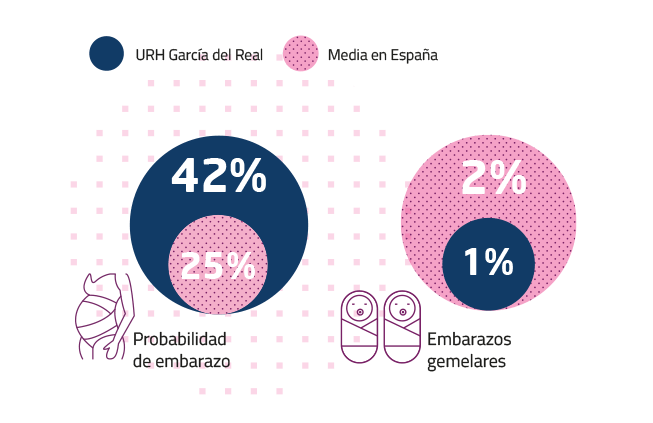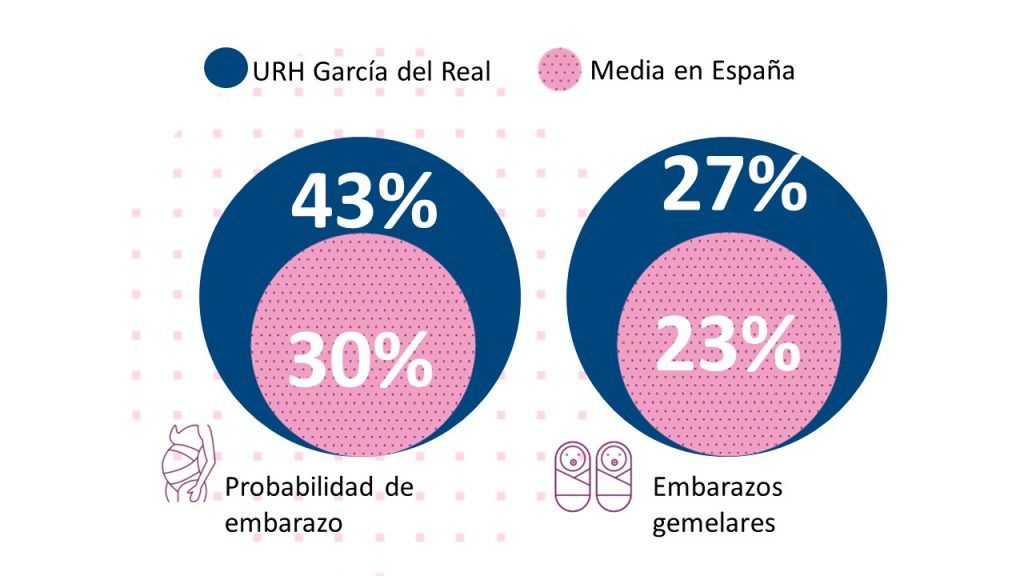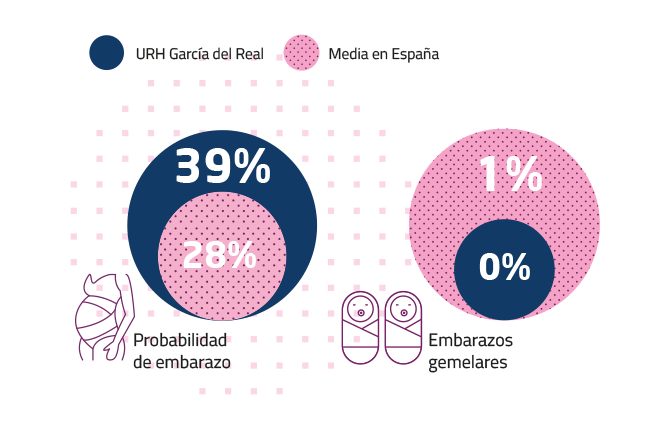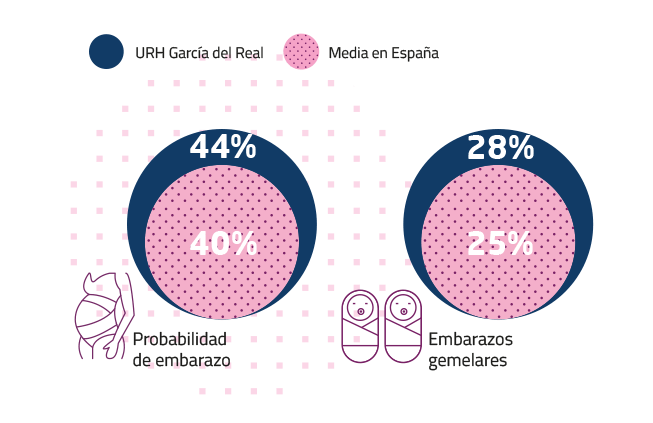
- Criotransferencia, Embriodonación, FIV, Ovodonación
Autora: Sylvia Fernández Shaw
 Español (Spanish)
Español (Spanish) Français (French)
Français (French) English
EnglishMultiple pregnancies are the most common risk associated with Assisted Reproduction Techniques (ART), especially in IVF. From the very beginning, our goal has been to achieve the highest probability of pregnancy with the lowest proportion of multiple pregnancies.
Since 2000, we are pioneers in transferring 2 embryos instead of 3 in IVF, and as a result we earn the “Best Oral Communication Award” at the National Congress of the Spanish Fertility Society (SEF). Shortly thereafter our goal was to achieve similar pregnancy rates with selective single embryo transfer (SET) than with double embryo transfer, to reduce to a minimum the risk of twin pregnancies.
Our last five years statistics show that 40% of women under 39 have at least one good quality embryo. In these good prognosis cases, the pregnancy rate (PR) following selective single embryo transfer is comparable to that achieved with double embryo transfer (46% vs. 51%); and multiple pregnancy rate is 0% (compared to 27% of twins transferring two embryos). When we analyse our success rate in all IVF patients the numbers are similar. Pregnancy rate transferring 1 embryo in 42% (with 1% twin rate) and is 40% transferring 2 embryos (with 24% twin rate).


To achieve this goal, it was necessary to combine different strategies during the cycle of in vitro fertilization. Some of them are:
– Diagnosis and careful preparatory treatments in both partners, to improve the prognosis of pregnancy.
– Treatments with soft, custom ovarian stimulation, they get the best possible egg quality.
– Combination of gas in the incubator (7% CO2+ 5% Oxigen) that resemble as closely as possible the conditions of the tubes and uterus.
– Embryo culture until the blastocyst stage to select the best embryo for transfer.
– Ultrasound-guided embryo transfer, which simplifies the process and reduces the risk of ectopic pregnancy.
-Use for embryo transfer in a culture medium called Embryoglue, enhancing embryo implantation.
Moreover, surplus embryos may be vitrified (ultrarapid freezing) and transferred at a later cycle. The pregnancy rate per frozen-embryo-transfer is similar when transferring one or two embryos (39% versus 44%) and the incidence of twins with single embryo transfer is 0% (versus 28% of twins with double embryo transfer).


WE ARE HERE TO HELP YOU
Send us your question. You can make a gynecological consultation or, if you prefer, a consultation with the embryologists. We will reply to you as soon as possible.


Camino de la Zarzuela, 19 28023 (Aravaca) Madrid.
+34 91 740 16 90
secretaria@urh.es
Monday to thursday
8:00h a 14:00h 15:00h a 19:00h
Friday
8:00h a 14:00h



Demande un rendez-vous.
PIDE CITA
Envíanos este formulario con tus preferencias para la cita (fechas y franja horaria) y te llamaremos por teléfono para concertarla. En caso de que quieras que te contactemos por e-mail indícanoslo en los comentarios. Muchas gracias.